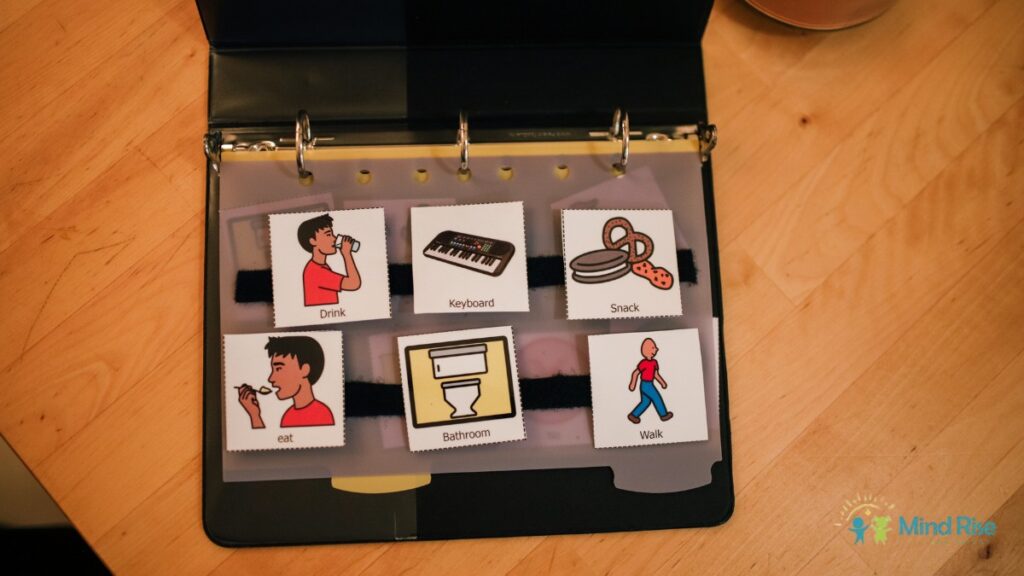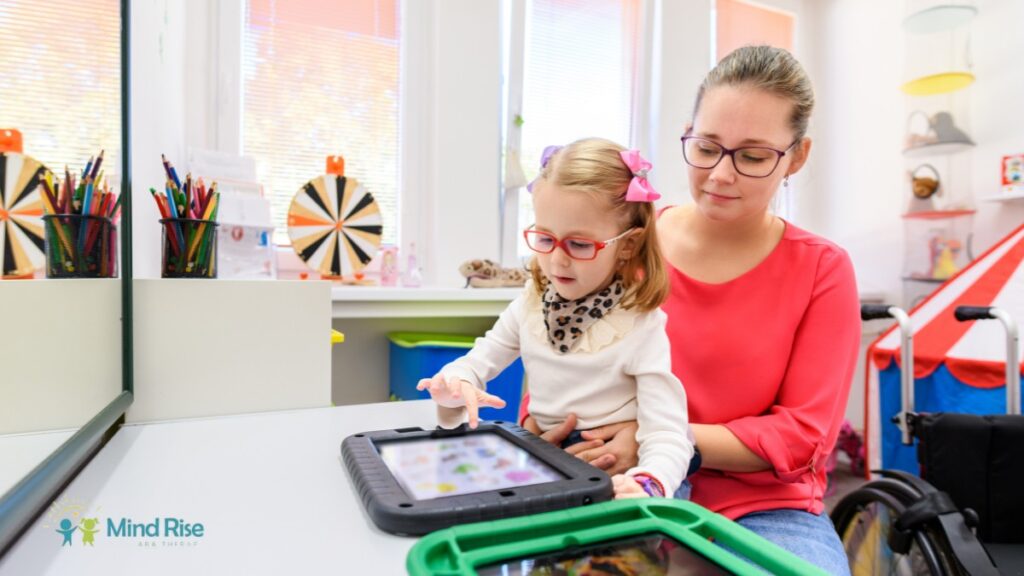Key Points:
- Communication tools for autism range from AAC devices to visual supports and play-based interaction techniques.
- Tailoring strategies to your child’s unique strengths and challenges makes the biggest difference.
- Consistency, patience, and the right support system (like ABA therapy) can dramatically improve communication outcomes.
If you’ve noticed your child struggling with communication, you’re not alone. Many parents face this challenge, but the good news is that there are numerous autism communication tools available. Understanding how each tool works can empower you to choose the best approach to support your child’s growth and confidence.
Why Do Communication Tools Matter So Much in Autism?
For children on the autism spectrum, communication challenges can show up in many ways—from delayed speech to difficulty with back-and-forth conversation. But that doesn’t mean they don’t have something to say. The right autism communication tools can bridge the gap, helping children express themselves clearly, comfortably, and confidently, without relying solely on spoken words.
This matters immensely. When a child feels heard, frustration decreases, behavior improves, and learning becomes easier. Whether it’s using a picture card to say “I’m hungry” or a speech-generating app to talk through emotions, communication tools give children a voice that fits their needs.

What Are the Most Effective Low-Tech Communication Tools?
Not all communication solutions need to involve screens or software. In fact, some of the most effective tools are simple, tactile, and easy to integrate into daily routines. Low-tech solutions can be especially helpful for younger children or those who respond better to visual, physical prompts.
These tools are often the foundation of early communication, especially before more advanced systems are introduced. Here’s a look at some commonly used ones:
- Picture Exchange Communication System (PECS): A structured way for children to use picture cards to request items or express needs.
- First-Then Boards: Simple visuals that show what will happen first and what comes next to build understanding of daily routines.
- Choice Boards: These help kids make decisions by selecting pictures representing available options (like snacks or activities).
- Emotion Cards: Visual tools to help children identify and communicate how they feel when verbal expression is difficult.
These tools are portable, easy to create, and can be used in any setting—from home to school to therapy sessions.
How Do AAC Devices Help Children with Autism?
For children with more complex communication needs, augmentative and alternative communication (AAC) devices can be life-changing. These devices range from iPad apps with voice output to more specialized electronic systems tailored to nonverbal users.
AAC devices aren’t just a substitute for speech—they’re a way to develop language. Many kids who start with AAC eventually build enough skills to supplement or even replace the device with spoken words. Here are some popular examples of AAC tools and apps:
- Proloquo2Go: A speech-generating app with a customizable vocabulary system.
- TouchChat HD: Offers symbol-based and text-to-speech options for different levels of communicators.
- LAMP Words for Life: Designed for consistency and motor planning, ideal for long-term communication development.
- GoTalk Devices: Simple, robust physical AAC devices for non-readers or kids who need tactile interaction.
AAC should always be introduced with guidance from a speech-language pathologist (SLP) and used alongside verbal encouragement, not in place of it.
What Role Do Visual Supports Play in Autism Communication?
Visual supports are more than just helpful—they’re often essential for children with autism. These tools capitalize on strengths many autistic children already have: strong visual processing and pattern recognition. Visual supports can reduce anxiety, clarify expectations, and support independent communication.
They work especially well in new situations or transitions, when verbal instructions alone may not be enough. Below are some commonly used visual support tools:
- Visual Schedules: Break down routines into step-by-step visuals that help children anticipate what’s next.
- Social Stories: Personalized, illustrated narratives that explain social situations or appropriate behaviors.
- Labeling Systems: Picture or word labels on drawers, shelves, or rooms to build vocabulary and independence.
- Timers with Visual Cues: Show how much time remains during an activity to reduce uncertainty and support smoother transitions.
Using visual supports consistently across environments (home, school, therapy) gives children a stable structure to build communication skills.
Can Play Be Used as a Communication Strategy?
Absolutely—and for many children, play is the most natural and effective way to build communication. Interactive, imaginative play encourages turn-taking, joint attention, and language development—all vital skills for children on the spectrum. Parents often underestimate how powerful structured play can be when it’s used intentionally.
Even nonverbal children can express themselves during play. It’s about creating opportunities to communicate, not forcing speech. Here are some play-based communication strategies parents may use:
- Modeling Language During Play: Narrate your actions (“I’m building a tower”) to build vocabulary.
- Turn-Taking Games: Simple back-and-forth games encourage the give-and-take of communication.
- Choice-Making in Activities: Offer limited, clear choices to encourage decision-making and verbal (or nonverbal) responses.
- Using Toys as Communication Aids: Have the child “ask” for favorite toys using pictures, gestures, or words.
Pairing play with communication tools, like AAC or picture cards, can amplify the benefits.

How Can Parents Support Communication at Home?
Parents are the most consistent people in a child’s life, and often the most effective communication partners. By integrating autism communication tools into everyday routines, parents can make communication feel natural, not like a lesson. The key is to be patient, observant, and proactive.
Whether your child is verbal or nonverbal, your response, encouragement, and modeling can help language develop in the right direction. Try these home-based strategies for building communication:
- Create communication-rich environments: Label items around the house and narrate what you’re doing.
- Pause intentionally: Give your child time to respond during routines, like meal prep or playtime.
- Use consistent prompts and cues: Repetition builds familiarity and confidence.
- Reinforce attempts, not just perfect words: Celebrate effort, even if it’s a gesture or sound.
When the home environment supports communication, every moment becomes a learning opportunity.
What’s the Role of ABA Therapy in Communication Development?
Applied Behavior Analysis (ABA) therapy is one of the most structured and effective approaches for helping children with autism develop communication skills. It’s not about drilling speech—it’s about breaking down communication into manageable, teachable moments tailored to your child’s abilities and preferences.
ABA therapists often incorporate many of the tools mentioned above—AAC, visuals, play-based methods—into their programs. They also teach parents how to continue the strategies at home, where the most meaningful progress happens.
Support Your Child’s Voice with ABA Therapy
If you’re navigating the world of autism communication tools, know this: you’re not alone, and there are effective strategies that truly work. From PECS to AAC devices to play-based interactions, the goal is always the same—to help your child express themselves in the way that feels most natural and empowering.
At Mind Rise ABA, we specialize in supporting children on the spectrum through individualized, evidence-based ABA therapy in Virginia. Our programs are designed to build communication step-by-step, using the tools and techniques that work best for your child.
If you’re looking for help developing your child’s communication skills, reach out to Mind Rise ABA. Let’s work together to give your child the tools they need to be heard, understood, and confident in their world.

